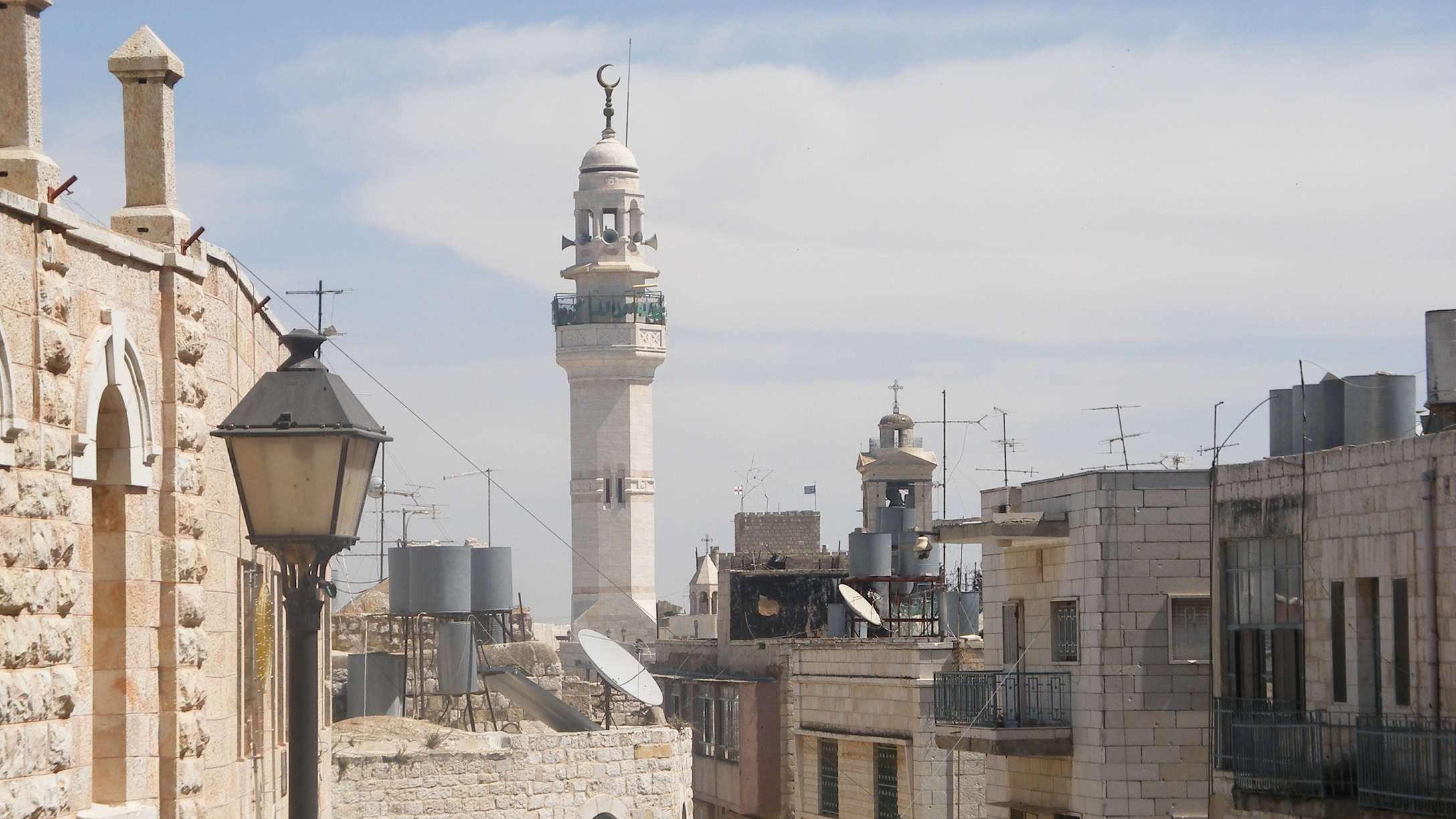The Triangle, as locals refer to the trio of towns—Bethlehem, Beit Sahour and Beit Jala—is home to the oldest Christian community in the world. Today, it’s surrounded on three sides by the segregation wall, the natives have to apply for permits to enter religious sites, and there is only an estimated 2% Christians left in the Holy Land. But that hasn’t stopped them from being creative. I come yearly to get my dose of home, and home is food. I barely enter Bethlehem, and discover I’ve eaten three meals without knowing how I got from one relative’s house to the next. In the good Mediterranean fashion, I’m asked “Have you eaten?” Which means, I love that you are here to visitors, and I love you to family and friends. I’ve always found it interesting how love appears in the form of a question. I begin eating right after the second syllable of Sahtein (which literally means “two-healths,” or double health to you, or bon appétit).
As we eat, we share our tales. Food has never only been about nourishment but also about culture and family. The Bethlehem table has been what the land and sea offer. Fruits and vegetables our clock, as we ate seasonally. This has sadly changed. Today, food is a reflection of the political landscape. OCHA reports that “more than ‘85% of the Bethlehem governorate is designated as Area C, the vast majority of which is off limits for Palestinian development, including almost 38% declared as ‘firing zones,’ 34% designated as ‘nature reserves,’ and nearly 12% allocated for settlement development.” That “farmers in at least 22 communities across the governorate require visitor permits or prior coordination to access their privately owned land located behind the Barrier or in the vicinity of settlements.”
Cooking has always been a heart-warming experience, but two dishes make me nostalgic. My grandmother made them without ever measuring any ingredient. No one in the family has been able to prepare them the way she did. Like life in exile, something is always missing. The first is shish barak. A tiny minced beef dumpling, which look like tortellini, and served with yogurt soup—achieved by mixing corn flour, yogurt, and boiled meat broth. The second is marma3on, the Bethlehemite name for maftoul or couscous. For years I’ve been trying to unfurl how we came to call this dish marma3on. Couscous is a traditional food from the Magreb or North Africa, made from semolina; in the Mashrek or Levant, we eat maftoul, a rounder and larger grain. The wheat bulgur is boiled, sun-dried, cracked, and then hand-rolled. A laborious and beautiful process. Today, you can buy Canaan Fair Trade’s organic maftoul, whole grain and hand-rolled, produced by women’s cooperatives in Palestine. The dish can be prepared in many ways. I usually eat it with chickpeas, chicken cooked in onions, allspice, cinnamon, cumin, olive oil, salt and pepper, and a garlic and lemon-flavored broth.
The food consistently found in my family’s Bethlehem kitchen: Za’atar, a spice blend generally made with dried thyme, oregano, toasted sesame seeds and salt—I add sumac, its zesty lemony flavor and deep red-purple color is seductive; Shrak, a thin bread made over a semi-spherical hot plate; Taboon, a thick bread typically made in clay ovens; Pita bread or kmaaj—the word derives from the Turkish ekmaji, meaning baker; Labaneh, a velvety yogurt-like cheese prepared in different ways and made from goat or sheep milk; Samneh baladieh, homemade strained butter boiled with cracked wheat, nutmeg and turmeric; Homemade mishmish or apricot jam; Olives and olive oil—I like the one with a robust aroma, with a hint of bitterness, and a fruity aftertaste.
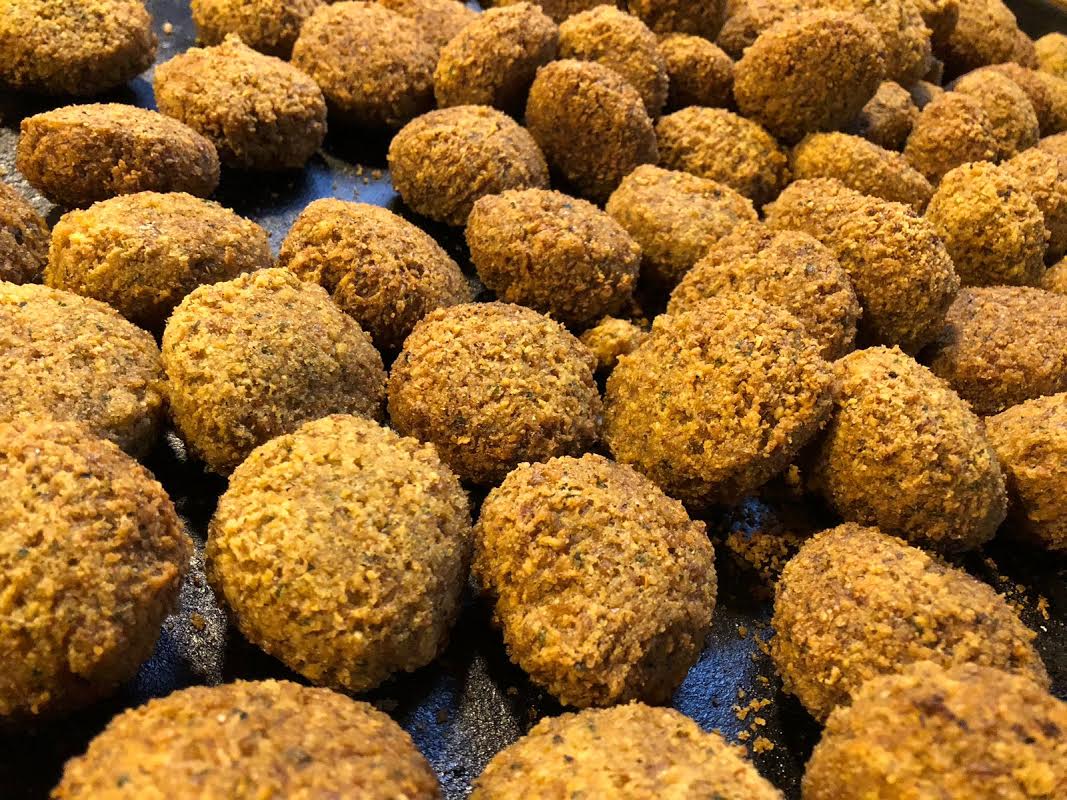
Some of the cafes and restaurants I go to in the birthplace of Jesus Christ, and its surrounding towns:
The 213-year-old year Abu Fouad Bakery at the Catholic Action Circle, located right at the start of one of the city’s oldest streets, and the only entrance to Bethlehem for centuries Ras Fteis Street, today known as Star Street. I get oven-baked eggs with sesame ka’ak or Ka’ak Al Quds—like a New York City bagel but better, crispier, and more visually tantalizing with its elongated oval-shape. For Taboon and kmaaj bread, I go to Al Mahed Bakery on Manger Street. And for the past few years, have shakshouka for breakfast at Zuwadeh (Sahel Street, Beit Jala).
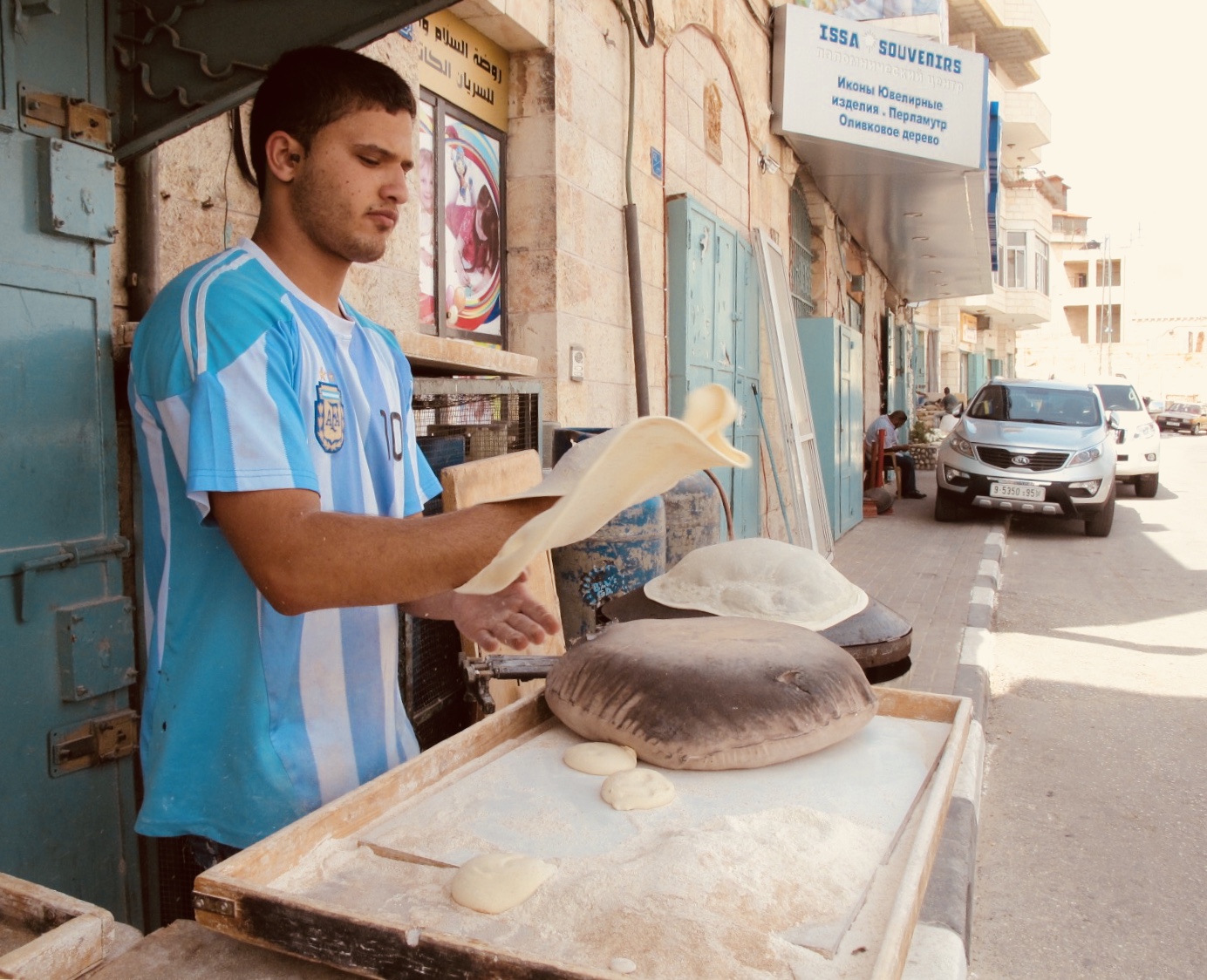
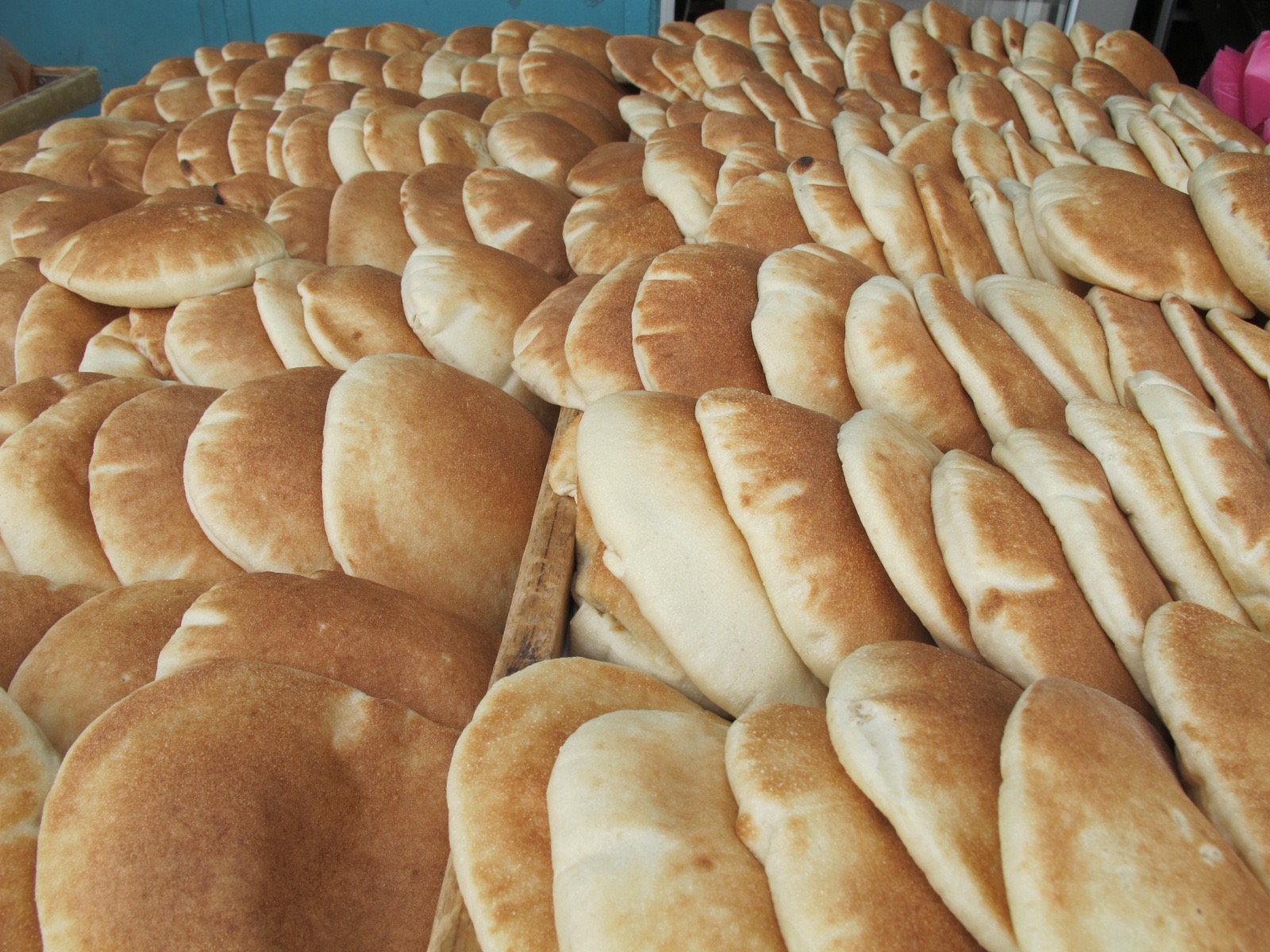
Lunchtime, I head to the famed stone-arched restaurant Afteem on Manger Square, opened in 1948. A visit to Bethlehem wouldn’t be the same without a warm salaam from Saliba, whom I’ve seen for years selling falafel sandwiches right outside the restaurant.
Or I go to Abu Shanab’s on Main Street. His mustache is famous, as are his Bushanab kebabs. The array of mezze that fills the table leaves me visually and gastronomically stirred.
Little Italy has the best thin crust pizza. Actually, everything they prepare is delicious. I can’t get enough of their lemon sorbet and green apple sorbet. (Dr. Jmainer Street—Al-Karkfah).

For anything sweet, the go-to bakery Patisserie Handal. It opened on Christmas Eve, December 24, 1978. Everything is made with local ingredients, no preservatives or artificial raw materials. They are known for their éclair and pistachio ice cream. (30 Star Street).
My dark chocolate gelato I have at il Cantico, an ice cream shop in Manger Square with more than 35 flavors. It’s a project in collaboration with the City of Bethlehem, an Italian cooperation, and the John Paul II Foundation. Italian Master Gelatiers trained Bethlehemite ice cream makers, who in turn created distinctive flavors with local ingredients. The date-flavored gelato is special. They add mistaka, also known as miske or “Arabic gum” in other parts of the Levant. The name springs from mastic (Lentisk in English), a Mediterranean shrub that only “sheds resinous tears” in Chios, Greece. Mastic resin makes the ice cream chewy.
I eat my gelato beside the Popemobile that Pope Francis used when he visited in May 2014, and admire the stunning view of a mountain of olive trees (Well, I have to imagine that part, as it’s been replaced by dreadful Israeli settlements. According to OCHA, “over 100,000 Israeli settlers reside in 19 settlements and settlement outposts across the governorate, including in those parts de facto annexed by Israel to the Jerusalem municipality.”).
For espresso, cappuccino or Americano, I go to the courtyard of Casa Nova. It’s a hospice belonging to the Franciscans Order, situated next to the Church of the Nativity. Star & Bucks Bethlehem on Manger Square, or the heavenly balcony garden of Dajo at Visit Palestine.
In the early evening, I love Singer Café in Beit Sahour. I have fusto or dark-roasted peanuts with the salty peanut skins, and local handcrafted beer. They carry Shepherds Beer, that comes in an amber ale, a stout, and a blonde. It’s sold across the occupied territories, in Chile—home of the largest Palestinian population outside of the Middle East—and in Italy. There is a Shepherds Beer Festival in August. But I usually order the Bethlehem Pale Ale, the hint of sage has won me over. Wise Men Choice, another microbrewery in the area, makes it.
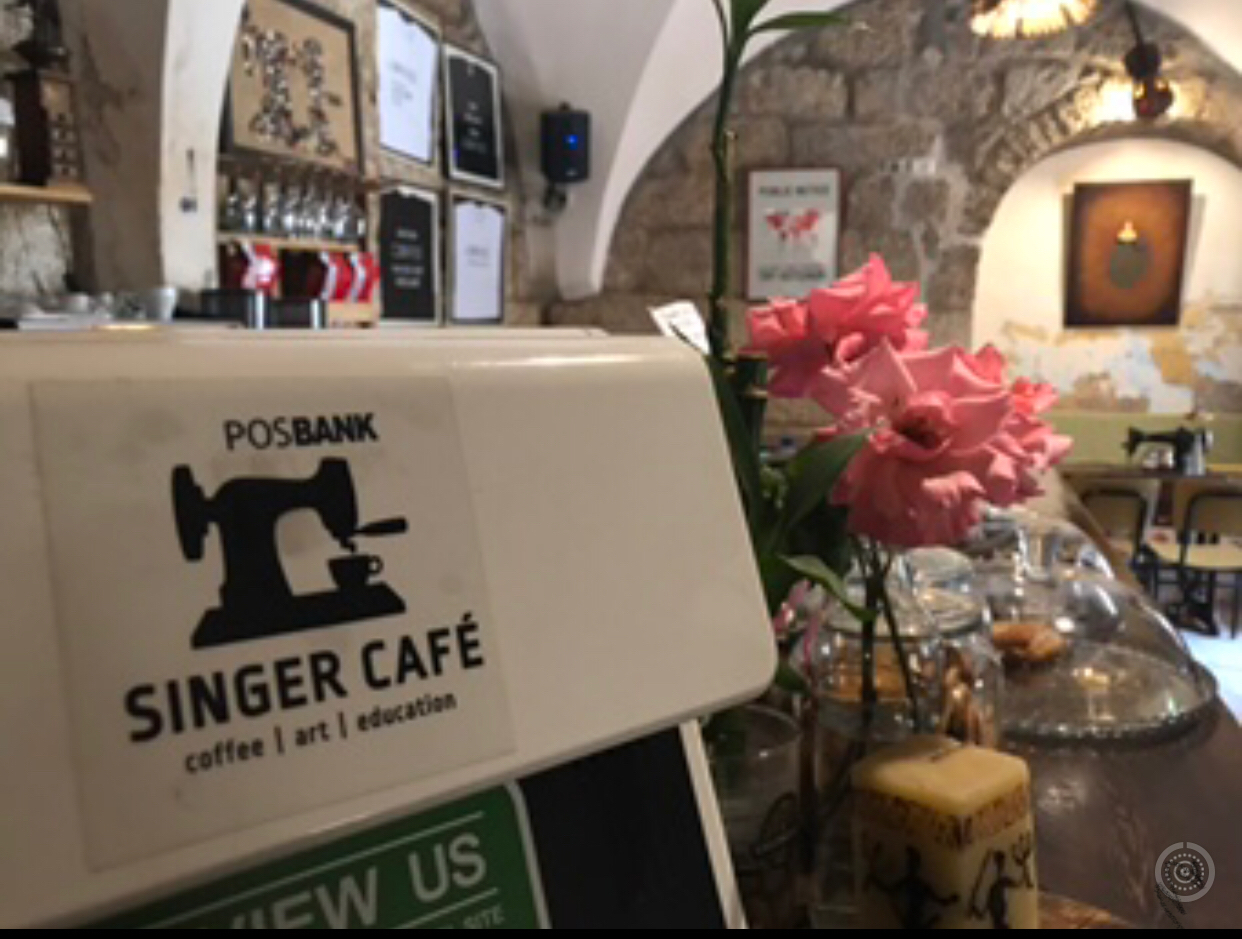
For Sunday lunch, there is nothing like Al Makhrour, a barbecue restaurant in the mountains of Beit Jala. Two unforgettable dishes are (ingredients vary): Zarb, chicken, meat or fish with vegetables—tomatoes, potatoes, carrots, onions, rosemary, cardamom, garlic—cooked underground in an earth oven, with fire made from olive and almond wood; and Fukhara, a chicken or lamb stew with vegetables and herbs—courgette, squash, red onion, pine nuts, parsley, garlic, sumac, rosemary, cardamom, Star anise—cooked in a clay pot.
Also in the Beit Jala mountains is the organic farm and restaurant Hosh Jasmin, where the view of the terraced olive groves and of the valley leaves me in a daze. I have a Taybeh beer, the first microbrewery in the occupied territories. Madees Khoury, the daughter of Nadim Khoury, one of the founders of Taybeh Brewing Company, is the only female Brewmaster in Palestine. As the sunsets, I order musakhan—Taboon bread with chicken, caramelized onions, almond and sumac. On a recent trip to Granada, Nicaragua, I was invited to an Arabic restaurant. The place immediately made me homesick. It was so familiar yet I was in Latin America. Suddenly, Mazen Saadeh, the owner of Hosh Jasmin emerged to greet me.
An exciting newcomer is Fadi Kattan’s Fawda Café & Restaurant in the tranquil and timeless feel of Hosh Al-Syrian Guesthouse. It’s a historic Bethlehem chef-d’oeuvre, a late 18th century limestone boutique hotel with twelve rooms that highlight Bethlehemite heritage. Kattan explores new approaches to local cuisine.
Bethlehem’s animated marketplace in the Old City is close by. I get lost there, and buy wild thyme, basil, grape leaves. mint, and m’loukhiyeh or jew’s mallow.
For recipes I refer to the Classic Palestinian Cuisine by Christiane Dabdoub Nasser from Bethlehem, and The Palestinian Table by Reem Kassis from Jerusalem.
If I want a quiet evening, I go for drinks at the courtyard of the Jacir Palace and Hotel. The Roman-Byzantine and Arab-Levantine architecture is breathtaking. If I want tormos or lupine beans, and to smoke narguileh—my favorite shisha flavor is apple—I head to Tent Restaurant in Beit Sahour. And for something more vibrant, the wine bar Rewined M & D on Manger Street.
I usually order Cremisan Wine, produced since 1885 by resident Italian priests of the Salesian Community. Today, Cremisan is torn—the main building is in Jerusalem and the storeroom on the other side of the parking lot is in the West Bank.
Recently, I discovered Sari Khoury’s handcrafted wine, grappa and arak. They have left me intrigued in infinite ways. Nasser Soumi, a Palestinian artist based in Paris inspired the idea for the project, which lead Khoury to do research for seven years before beginning in 2016. The name of the wine Philokalia, means “love of the beautiful, the good,” and reflects an “intention,” he told me. Then added, “it’s also the title of a collection of writings by Orthodox Christian spiritual masters, written between the 4th and 15th centuries.” He works exclusively with indigenous grape varietals of Palestine, unfiltered and unfined. The vivacious wine bottle artwork is by Soumi.
Khoury asks questions: What are my roots? What does the environment have to offer? What is the relationship between local wine and local cuisine, and which wine could compliment our cuisine? He is experimenting, and told me that some are more successful than others. He wants his creations to be elegant, and open a dialogue. His words left me at the edge of a wind wondering what tale his wines will weave.
To make road for a settlement, the Israeli army destroyed the vines from which his white wine “Grapes of Wrath” is made. The vines were crushed with large rocks. But they grew back, between the rocks, on both sides of the street.
Khoury explained the inspiration behind this year’s three main wines: “Anima Syriana,” a blend of red grapes, purely for the pleasure of the wine; “Amber” wine, an exploration of tradition and the relationship with our cuisine; and “Grapes of Wrath,” inspired by the harsher political reality that we live.” His boutique wines, about 4000 bottles in total, leave us with illumined senses, and the canticle of the soil.
The Bethlehem governorate is around 660 square kilometers. After seven decades of Israeli occupation, there is hardly anything left for its natives. According to OCHA, only about “13 percent of the Bethlehem governorate’s land is available for Palestinian use, much of it fragmented.” Original Bethlehmite families no longer exist in the Old City, which consists of seven harats, or quarters.
When I see stale bread outside of a house—it’s sin to throw out—or a stone icon of Saint George at the entrance of a business or a home, I feel a slight relief. It usually means it belongs to an original family from the Triangle.
Every year, my cousin, niece and I go on walks, and in our own way, ask how the taste of this home tells us about who we are. What can we ask this 2000-year-old place? With the years, I’ve come to understand the depth of distance. Bethlehem is around 1.3 miles from Beit Jala, 2 miles from Beit Sahour, and 7 miles from Jerusalem. These short distances can take a lifetime, perhaps even more, to reach. But I’ve also come to understand that the Palestinian terroir is a viaduct between the world and us.

